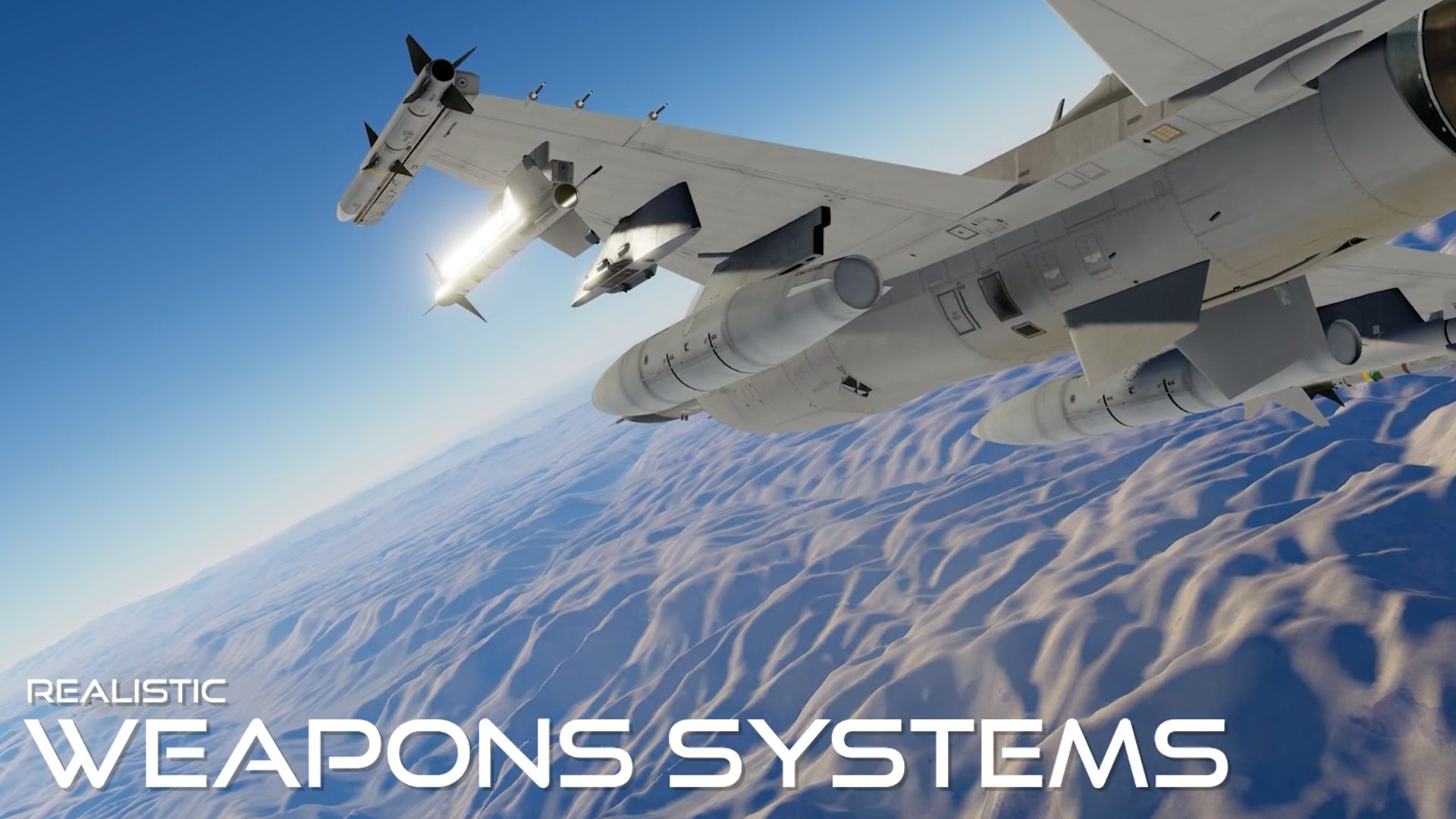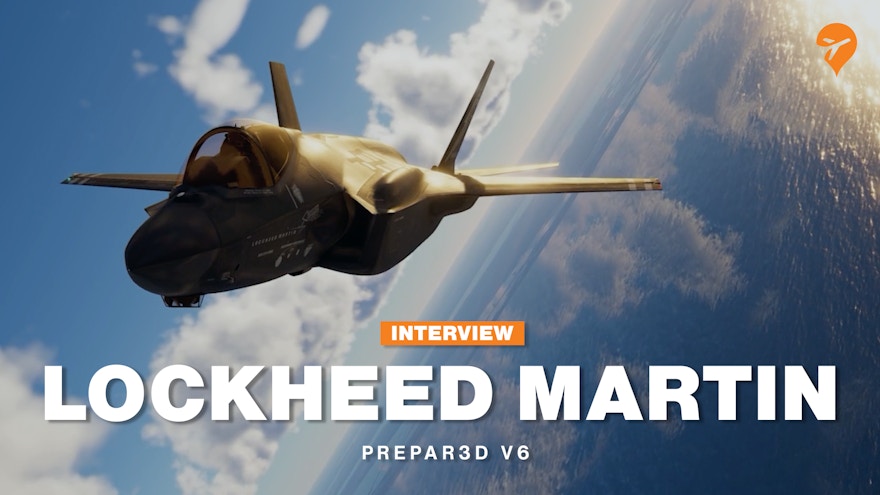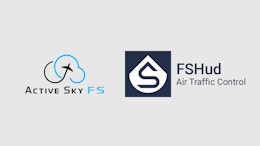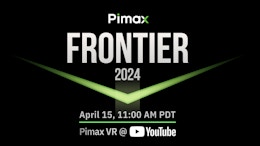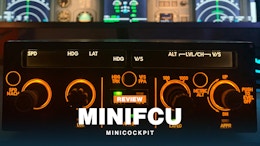Prepar3D v6 was announced during FlightSimExpo 2023 to the delight of many in the room at the time. The new trailer and details that followed gave us a bit of information on what to expect from the newest version of the long-running flight simulation platform. A few days ago, it was released to the public and simmers have been able to test out the new features for themselves.
During the event, we had the chance to speak to members of the Lockheed Martin team who worked on the product. Those people are Chris Metel, Rob McCarthy, and Kyle Tauzer. In the interview, we spoke to them about the new features (weather implementation, in particular), how third-party developers can use Prepar3D and information on performance.
FSElite: Starting off with some of the new features that will be coming with Prepar3D V6 could you go into a little bit more depth about some of the more technical aspects? That’d be really cool to hear.
My name’s Chris Metel, I’m the product owner of Prepar3D. I am here in Houston, so I’ll stop by and look for you this afternoon when I’m at the site over there and we could meet each other as well. Looking at the features. You saw kind of our high-level features of what we were looking at and we kind of grouped them up into four categories. A lot of them was on our lighting and shadows, reflections, those kind of items, atmospherics and weather. Content with a focus on the airport side of things. And then we improved our process, or streamlined our process the way updates are done within the software. We’ve introduced more advanced rendering techniques, where we’re using planer reflections, screen space, ambient occlusion, TAA. We’re kind of looking at a lot of items that are going to give us the opportunity to produce better visuals even with the same content.
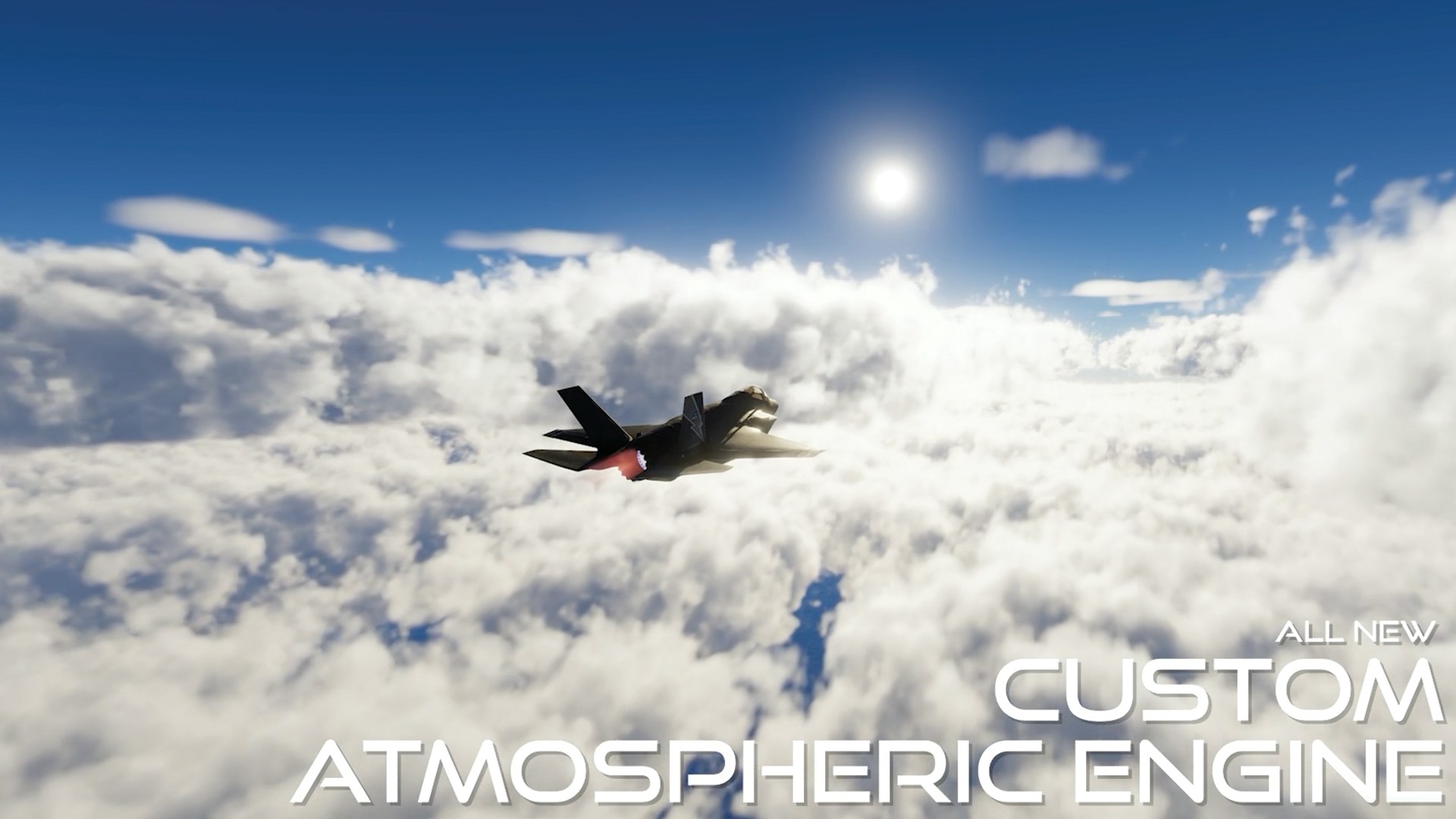
And then on the atmospheric side of things, we previously had True Sky and we ran into limitations using that product in version five. We got to a position where we couldn’t tweak it and we couldn’t make the changes necessary that our users expected. So what we did is, we implemented our own atmospherics internally, based on some unreal algorithms that we were able to utilize. And with that we were able to introduce a better atmospheric model, but with the addition of other weather items such as precipitation accumulation. So we have cooling and evaporation, our clouds are now dynamically lit, which includes lightning strikes. And one item that’s also kind of cool is, our weather is now based on weather stations. You configure it on a particular weather station, so as you transition from one location to another, you’ll experience changing weather. And we blend those different weather stations together, so you start with clear skies and you transition to maybe partly cloudy and you reach a storm. So you create an environment where if you’re training across a long distance, you’re able to experience a change in dynamic weather that you’ll typically see in a real environment.
And then on the content side of things, really our focus has been on the airports and around the airports. And primarily the reason behind this is that’s typically where training most often occurs closest to the ground in those areas. So what the users will quickly notice is all of the lighting models, and objects around the airports have been updated. New textures and new models are much more appropriate to what a realistic environment would look like.
And then finally on the streamlined update process, there was a focus on… In the past where the users had to download a large file, lots of bandwidth, lots of time and a tedious install process, so we wanted to eliminate that. And so now we introduced a process where the users are getting notifications from the application that an update is available and that update only includes the files that are required to update, so we could be updated in a few megabytes to make a quick change to the users. So in the past, we had to wait a greater time to ensure that there was enough content to deliver because we didn’t want to put out a 20-gig file for a single change, which is what we had done in the past. We’ve kind of eliminated that so users could spend more time training it as opposed to downloading update their software.
FSElite: Does this mean that updates will be released a little bit more frequently as opposed to what we’ve seen in this cycle of the x.1, x.2, etc, which kind of takes a long time in between each of those updates?
Chris Metel: That’s absolutely the goal. In the past, typically we also see we have a patch pretty quickly after a release, and that’s because we could test for years and there are so many different users or so many different systems with different use cases, somebody’s going to identify something. So this is going to be the ability to kind of react more quickly to those situations. We’re also looking at potentially pushing up… We could do scenario updates, so we have a big focus on scenarios and training scenarios and we can push those out to the users so they have different things to train with and gain their experience within the simulator.
Rob McCarthy: Like Chris was saying, it’s all within the application, so the user will get a notification on startup if there’s an update and they can download directly from the application and it’ll install automatically. So previously, this is based on user feedback, of course, as one of the main gripes was when there were updates it was a pain, they had to uninstall stuff beforehand and then install. So that’s all streamlined, it’s all taken care of for the user now. And yeah, like Chris was saying also, we can get patches out quicker and more focused instead of having to wait for there to be enough fixes to make it worth sending out a multi-gig update, we can send out 150mb patch with a few fixes that are important after release now, quickly.
And more with the plainer reflections. Previously that was only on bodies of water like rivers, lakes, and the ocean. But now even puddles at an airport will reflect objects around them, which is pretty cool. And more on SSAO, screen space ambient occlusion, I’m not sure if you’re too familiar with that, but it’s a technique that a lot of modern video games use as well to really amplify self-shadowing on objects. So you’ll see a big difference in the visual cockpit just with how much all the gauges and switches and everything will stand out because we’ll have those small shadows around them really bringing a lot of detail to the VCs.
FSElite: So with all these changes then with the technology and talking about detail, what difference will that make in terms of performance for the end user? Is there any sort of comparison between what’s available now and what will be coming in V6?
Rob McCarthy: Well performance-wise, with every release we try to fine-tune our performance and increase performance. So we’re hoping to keep a similar performance to previous versions by adding new features. But the more you turn on, the more performance impact will occur. Dynamic lighting on clouds is probably one of the more performance-intensive features we’ve added. So that is off by default, but it’s there. And then also with True Sky with the volumetric clouds, if we have different levels of detail that you can ramp up that will incur performance costs. But we’ve taken care to really fine-tune performance, that’s always been a really important thing for us to not have default graphic settings or even higher graphic settings be too detrimental to performance.
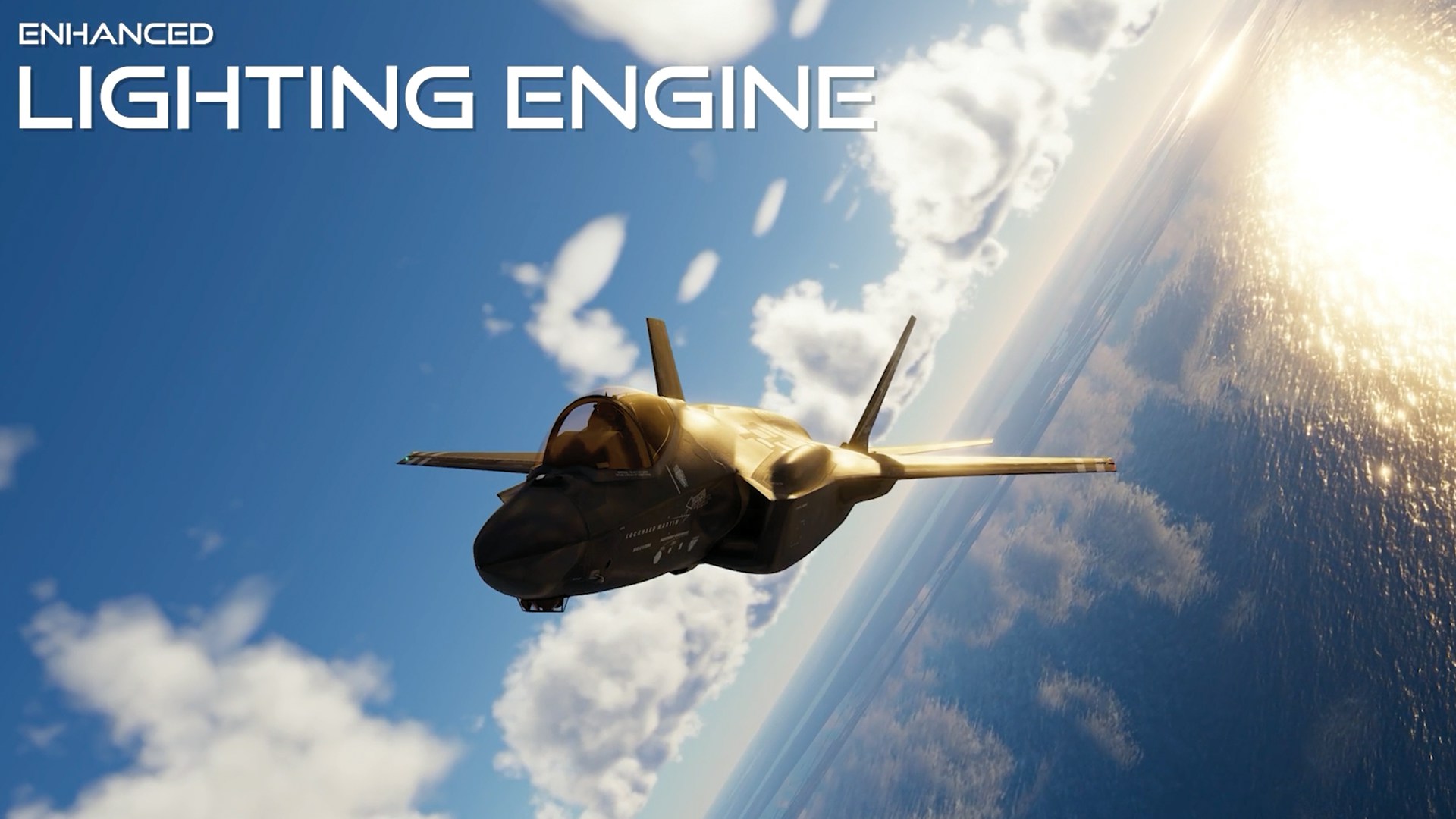
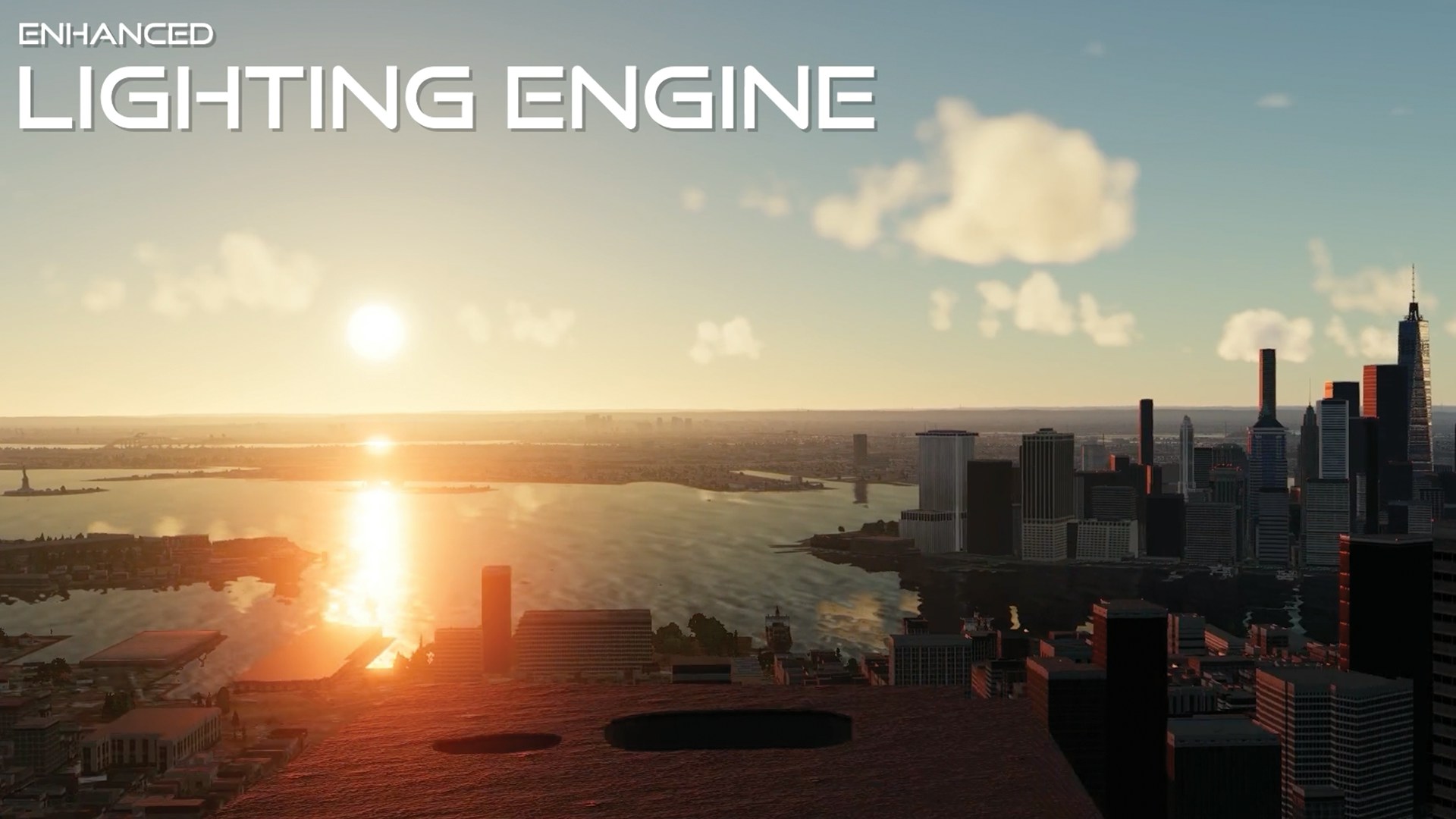
Chris Metel: To follow on, there’s always a focus on… We have users with specs that stretch across the board, so we want to enable those users who have the systems and are in a serious training environment to be able to have high performance with the highest settings, but still have a good experience with those who are just stepping into the Flight Sim community and maybe not have the hardware to support it. So we try to do that full blade and give the users the opportunity to tweak their settings to ensure they’re getting optimal performance.
FSElite: So one of the standout features for me in the trailer that was shown off… And I know P3D has always had this version of multiplayer, but multiplayer was one of the features that was really highlighted in this trailer. Have things changed? Is it a bit more accessible to do? And I saw a bit more formation flying and stuff. Has there been many improvements to the multiplayer function of P3D?
Chris Metel: I think what you’re looking for is that, is it easier for users to create a kind of multiplayer lobby or that kind of session where we’re bringing things together? I would say unfortunately that wasn’t our focus, if that’s where your question is headed. Our focus has really been on performance and specific use cases. And those use cases as you’ve seen in the video, are cases where there’s close formation flying, such as when there’s air refuelling. We have users that are flying in a multi-shared cockpit scenario. So you have two players flying a single plane, in a pilot seat and a co-pilot seat, interacting in a shared environment, and that shared environment is then interacting with other aircraft. And those were the use cases and scenarios we focused on to ensure the performance was there, that when person A is switching a cockpit switch or seeing something or making adjustments to the aircraft in one location, the other pilot who is physically across the world is able to interact with them in a seamless environment. So the focus has really been on specific use cases in performance.
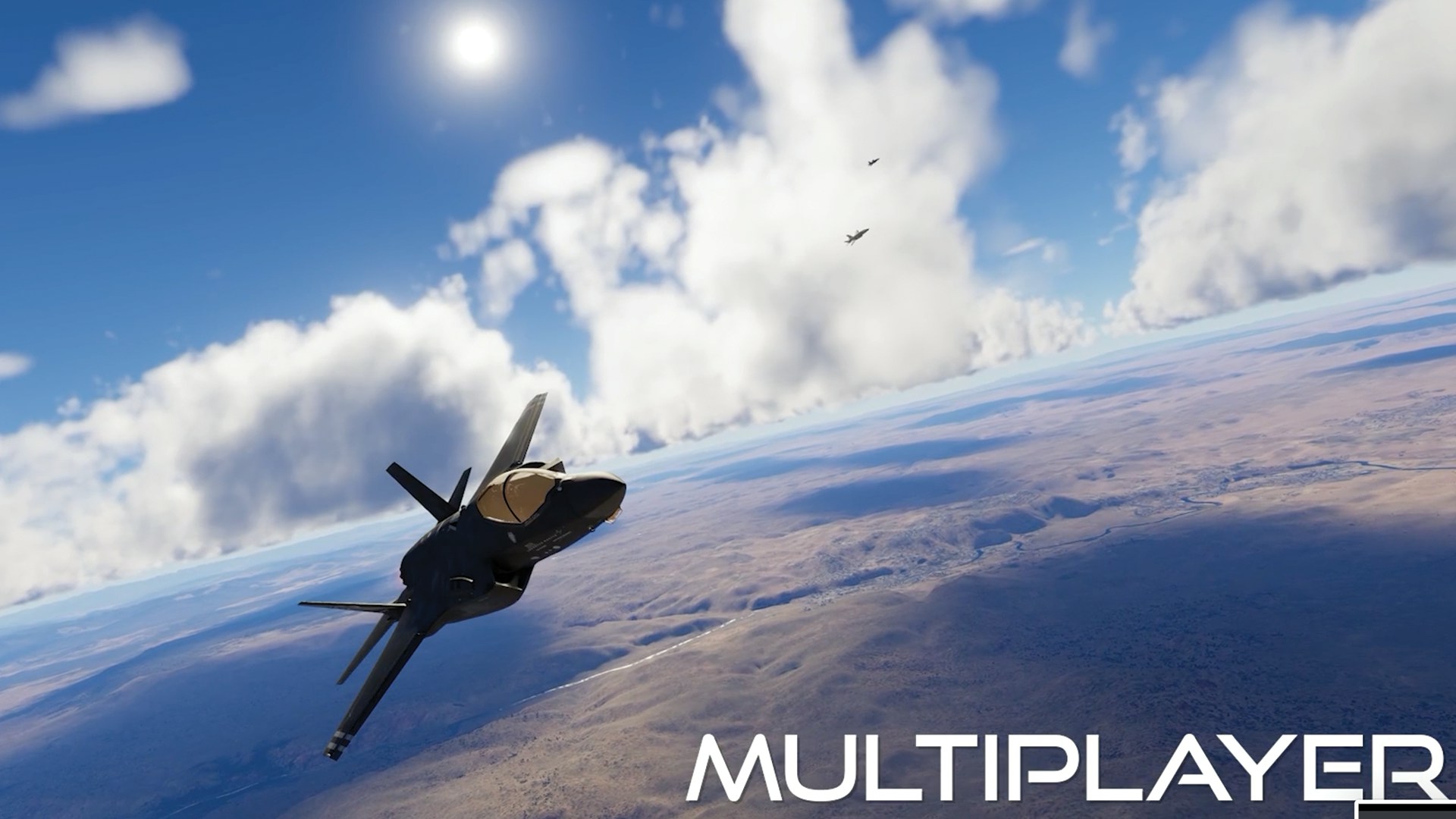
Rob McCarthy: We identified cases to really reduce a lot of network traffic when using multiplayer in some cases by pretty significant amounts. So that’s one of the main perf increases that people should see there.
Kyle Tauzer: So one thing that may not be apparent to everyone all the time is that these gentlemen and our prepared team day in and day out, are working with customers who are out doing training, doing very unique, very cool things with our software. Things that we even sometimes couldn’t imagine. And so as those customers are pushing up against the bounds of what the software can support, multiplayer is a great example where our customers say, here’s a specific configuration I want, here’s a specific use case I want. These guys are literally hand in hand with them working through that.
And I think to foot stomp the discussion earlier about the update process, oftentimes those little fine tunes, those little feature enhancements are sort of buried in the tech documentation unsung heroes. They don’t get any love on the forums, right? But at the end of the day, they’re in those point releases and they’re going to be able to come in and go out to the user base that much more rapidly with that rapid update process. So I think a lot of the enhancements to multiplayer and really to a lot of the systems are evolutionary incremental enhancements that just make Prepar3D that much more of a Swiss Army knife for customers who want to configure things exactly how they want it.
FSElite: Right, got you. Missions seems to again have been a big focus within that trailer about the ability to really customize and create things. Basically looks a lot simpler with a bit more of a user interface. Why is that important for your customers and what have they been requesting from you to improve that part of P3D?
Chris Metel: So our focus, the way we look at it, because we have two tools that we feel are critical in the simulator we’ve been prepared, and that’s SimDirector and SimOperator. SimOperator is only available for the professional plus version and SimDirector is available across the board. Thinking of the game, SimDirector is the opportunity to create a level within your game. So those are what we think as dynamic lessons. So that’s typically what our users are requested and what they need. So if they want to teach a student how to land at a particular airport and to do the approach, they’re able to create a scenario which guides the user through the process, whether it’s through rings and give them information that your speed’s too high, your speed’s too low and tweak basically a scenario level or a lesson.

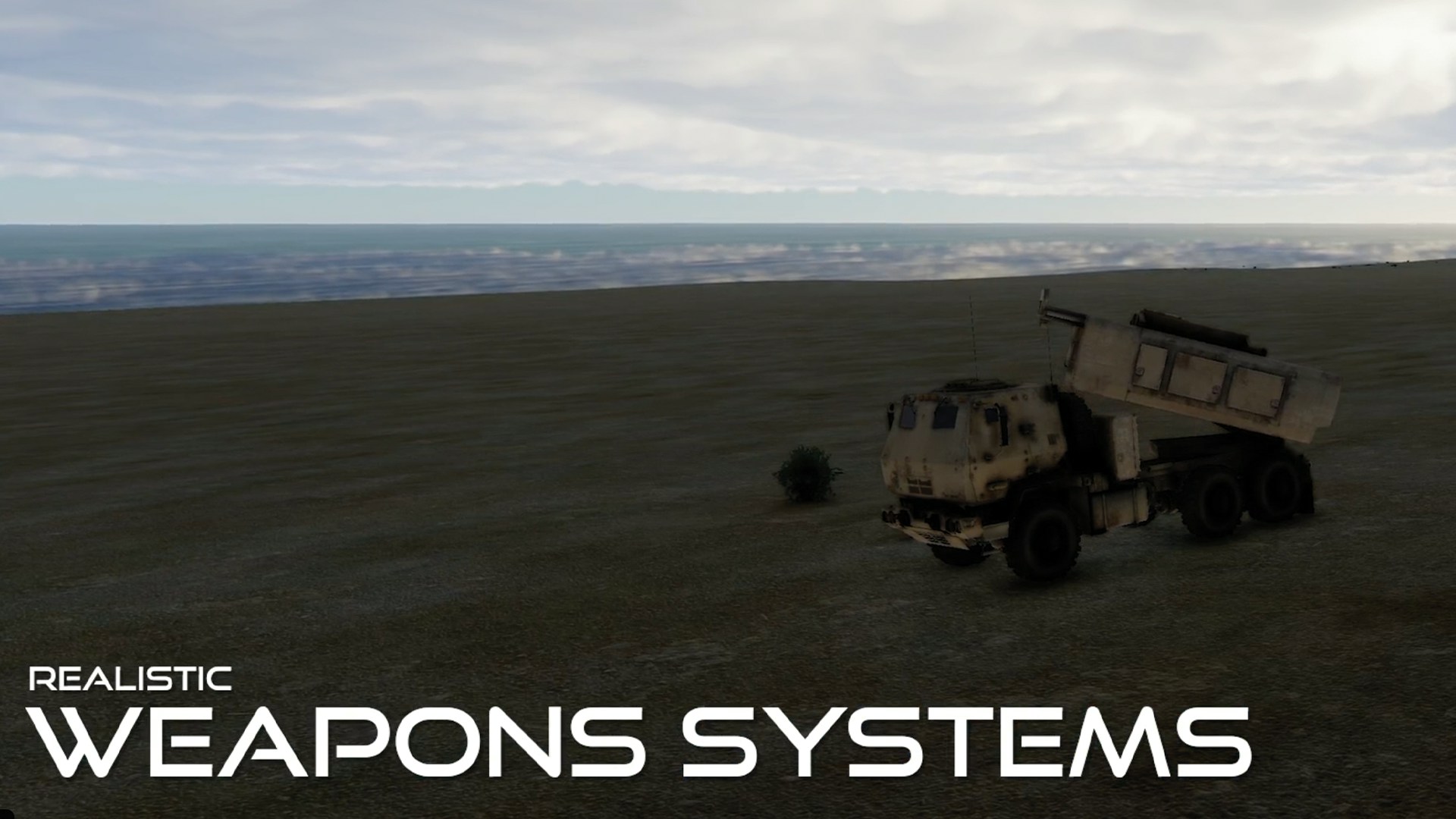

SimOperator is an instructor operating system that gives the ability to instruct or to interact with that level in real-time. So as they’re coming into land and making an approach and they’re doing everything right, well let’s introduce a flock of birds. And so you can introduce a flock of birds in real-time and see how that user reacts to it. So if they make those changes or you have wind start to pick up, the SimOperator gives the ability to do that. So what we’re looking to is create the scenarios, create repeatable situations and lessons that can be tweaked and modified so that students can repeat. And that way one class goes through a course and they go through a similar level, similar to your learn and algebra in school. It’s kind of a progression through it and we have the opportunity to do that with SimDirector.
That’s where the lessons are critical for our users and these scenarios are important. Free flight is fun. Everybody enjoys free flight and that gives you experience, but it’s these lessons. Think of it as a test that teachers created and you go ahead and. That’s that opportunity for our instructors to ensure the students are able to accomplish specific tasks.
Kyle Tauzer: If I can add to that a little bit, Chris. So again, our user base, is very diverse. And ultimately when we’re thinking about training, we’re not thinking about let’s go sit at the simulator and pick an airport and pick an aircraft and go fly somewhere. We’re thinking about syllabus standards. What are the specific training needs that an end user needs? And there’s no way for us to anticipate all those, so we can’t go and bake into the product, scripted missions that are maybe interesting but don’t sort of meet the full syllabus standard.
So we need to push into the product SimDirector, which gives the customer the ability to essentially create their own lessons. Whether that’s I need to focus on my cockpit and instrument flying and procedural training, what switch am I working on? Or whether it’s, there’s a lot going on in the environment around me and I need to have AI behaviours programmed, I need to be managing that and scoring that and whatnot. So we talk about a lot of things like how would a customer implement a virtual instructor, how would they do auto grading and how would they do that in a tailored fine-tuned way for their exact use case.
Chris Metel: One other thing to add that it does impact the greater community if flight enthusiasts are using the product is using SimDirector, you have the ability to modify the terrain. So some people who are doing VFR flying care about particular points of interest along the way, you could add those within SimDirector. So if you have your local airport and there’s a super Walmart that you care about that you fly over, that’s where you know you turn, you could utilize SimDirector to add that build in to it in there where you’re flying that location, you’ll see that as well. So it’s an ability for users to tweak that environment as well.
FSElite: And actually this leads quite nicely onto the next question I had already about tweaking and the third-party developers that have obviously built and designed many products for P3D over the years, many of which are in V5. Has there been much conversation with those partners to let them know about V6 in order to bring their products forward, and have they had much opportunity to test that and get things ready in time for when V6 does eventually release?
Chris Metel: So the V6 development has been going on for an extended period of time and we have a beta process that goes on before we release. Within that beta process, we include the vast majority of ecosystem developers or within the ecosystem so they have access to early insights into the product to see how it impacts the products that they’re building, so they do have time to update. We also try to make it a little more streamlined for them. Prepar3D has a history of being backwards compatible, which is good for the ecosystem, but it makes life a little more difficult for us because as we want to make changes, we can’t do so some things because we’ll break content that was made for Prepar3D version three or something. So there is a challenge there.
Even in this particular case of version six, we imagine the content is all going to work that the third parties build. The biggest difference that we see is with our new enhanced lighting. They may not be taking advantage of that lighting, whether they’re not using updated textures or whatnot. So the aircraft, we imagine will continue to work and based on the feedback we got, they do work. There is just some tweaking that the third-party developers need to do to really take advantage of the changes we made in the lighting, in the rendering. And Rob supports a lot of our beta group. I don’t know if you have anything to add on the beta group side of things.
Rob McCarthy: That was a great overview there. Yeah, we usually start beta as well in advance of the release and include as many major third-party developers as we can during the whole process and we’ll put out beta versions on a regular basis, so that they have access to make sure their products are compatible. And we do feel very confident that we’ve maintained the vast majority of backwards compatibility relative to V5. The main thing is PBR differences with lighting as well as the night lighting we’ve seen. That’s probably the biggest difference, but we’ve tried to roll in a lot of internal overrides to make things look comparable with previous versions if things haven’t been updated. But yeah, we’ve had very good feedback through the beta with a lot of our major developers.
FSElite: Chris, you’ve obviously seen over the last weekend that this show has been the biggest show yet and I think it’s fair to say that Flight Simulation has grown in terms of the user base and popularity. Are you expecting to see or have you seen more people coming into the training side of things and wanting to advance their skills beyond some of the other platforms that are out there at the moment?
Chris Metel: The event is huge this year. The last one I attended in San Diego was a fraction of the size, a fraction of the floor space and there’s a lot more of excitement. I think one of the benefits that Microsoft Flight Sim brought into the environment is they opened the Flight Sim community to a much broader audience, so in a sense they made the flight community pie much larger. And we still want to be part of that pie and our focus continues to be on the training. I will say in the last few months, the last couple of years of training, we have seen an increase, which is great and that continues to be our focus. I think it’s brought more people in to understand that it even exists.
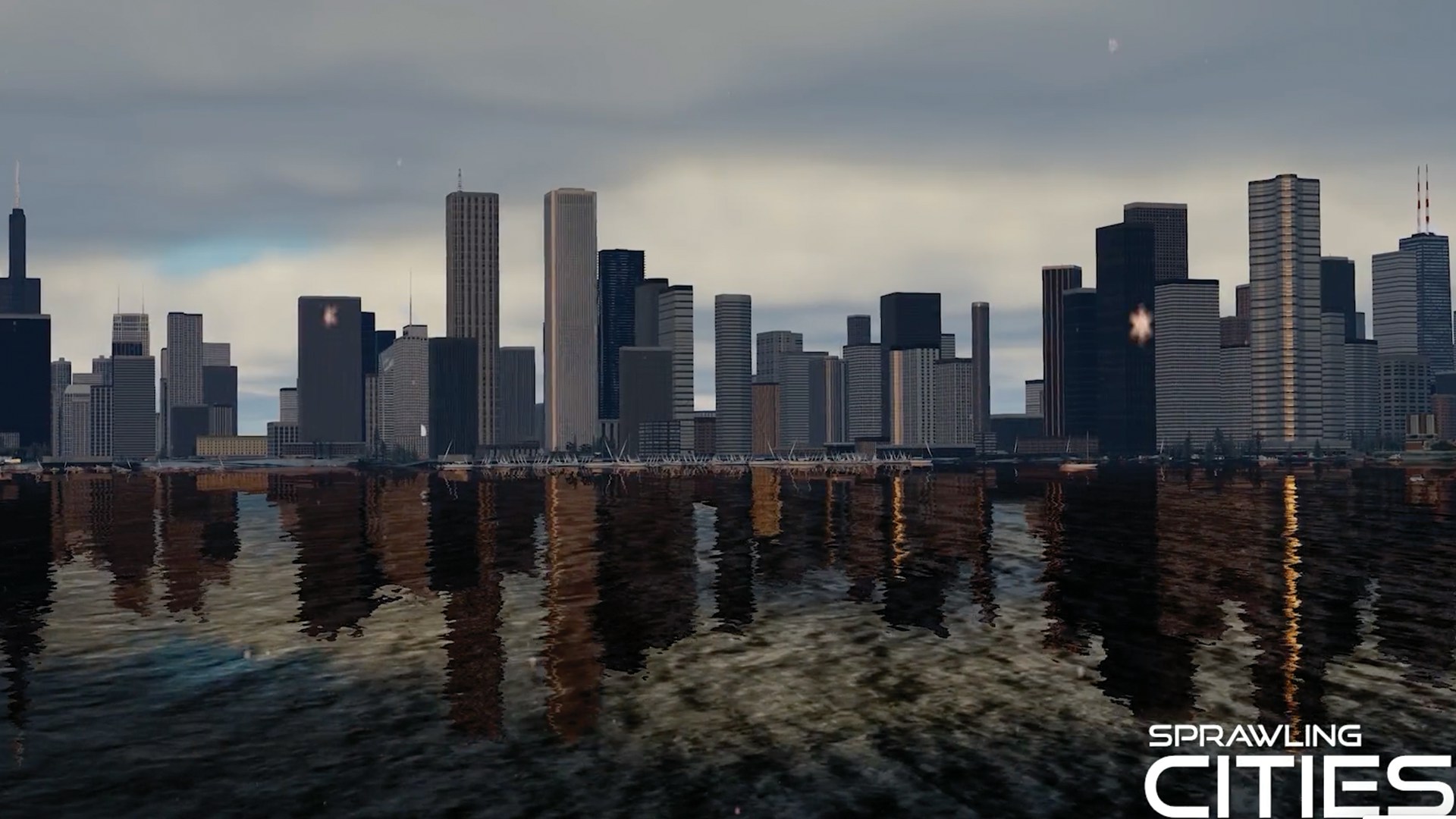
I think there are people that didn’t even know that Flight Simulation community existed and as they step into it, we’re seeing a lot more pilots as opposed to just enthusiasts who enjoy flying in a simulated environment, but those who want to supplement their flight. I actually spoke to a gentleman yesterday, who was utilizing Prepar3D, and he’s a 737 pilot for American Airlines. He went on medical leave for a little bit and so now he wants to get all his proficiencies up to date, and he talked to me about how he’s leveraged Prepar3D and how it’s working for him to be ready to test out when he gets back to the aircraft and be able to do that at home for a low cost in his environment. He was quite pleased and looking forward to get back in the air.
FSElite: Licensing has always been a challenging thing for some people to kind of understand in terms of the terminology and stuff used. I believe you’ve changed some of the language you used to make it a little bit more clear. Is that correct?
Chris Metel: That is correct. So with version six, we no longer have that academic license. We have a license that we’re calling a personal license and then we continue to have a professional and professional plus. I can’t speak to all the legalities, it is in the UL and a lawyer wrote it. But the high level understanding is, the personal license can be used in the home or within an academic institution that’s kind of a kindergarten through 12th grade. So I think what we’ve seen is a lot of the enthusiasts were required to buy a professional license because they weren’t a student, to fly at home. And now those people can train at home using a personal license.
FSElite: Chris, Rob, and Kyle – thank you so much for your time.
Chris, Rob and Kyle: Thank you!
